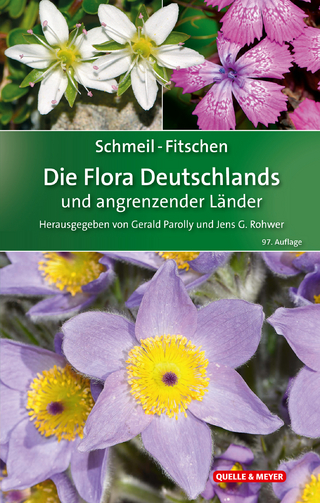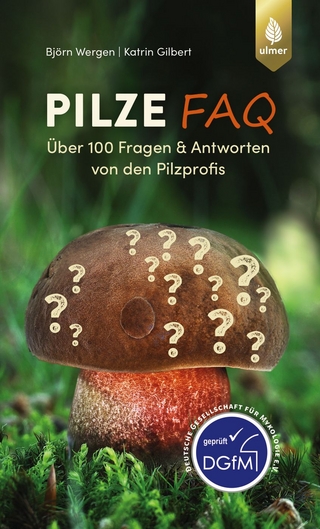Salamanders
Natur und Tier (Verlag)
978-3-86659-497-5 (ISBN)
Preface
Taxonomy and Systematics
Biology
Metamorphosis
The skin
Anti-predator behaviour
Colours, patterns and colour morphs
Thermoregulation
Diet
Reproduction
Natural habitats of tailed amphibians
Keeping salamanders and newts
Keeping in an aquarium
Keeping in a terrarium
What to look out for when making a purchase
Environmental conditions
Population density
Handling
The right diet
Reproduction
Sexing
Triggers for mating
Deposition and development of eggs
Development of the larvae
Metamorphosis
Raising freshly metamorphosed tailed amphibians
The right diet for terrestrial juveniles
Salamanders, laws and ethics
Amphibian decline and keeping salamanders – a contradiction?
Laws governing the keeping of newts and salamanders
Individual identification and marking
Diseases of salamanders and newts
How to recognise a sick tailed amphibian
Most common diseases
Medical care for diseased tailed amphibians
Species accounts of tailed amphibians (Urodela)
Salamanders and newts, Salamandridae
Calotriton asper (Pyrenean Newt)
Cynops cyanurus (Blue-tailed Fire-bellied Newt)
Cynops ensicauda (Sword-tailed Newt)
Cynops orientalis (Chinese Fire-bellied Newt)
Cynops pyrrhogaster (Japanese Fire-bellied Newt)
Euproctus platycephalus (Sardinian Newt)
Laotriton laoensis (Laos Warty Newt)
Lissotriton italicus (Italian Newt)
Lissotriton vulgaris (Smooth Newt)
Lyciasalamandra billae (Bille’s Salamander)
Mertensiella caucasica (Caucasian Salamander)
crocatus (Lake Urmia Newt)
Neurergus kaiseri (Luristan Newt)
Neurergus strauchii (Anatolia Newt)
Notophthalmus viridescens (Red-spotted Newt)
Ommatotriton ophryticus (Northern Banded Newt)
Ommatotriton vittatus (Southern Banded Newt)
Pachytriton sp. (Paddle-tailed Newt)
Paramesotriton chinensis (Chinese Warty Newt)
Pleurodeles waltl (Ribbed newt)
Salamandra atra, Salamandra lanzai (Alpine Salamanders)
Salamandra salamandra, Salamandra algira, Salamandra corsica, Salamandra infraimmaculata (Fire Salamanders)
Salamandrina perspicillata, Salamandrina terdigitata (Spectacled Salamanders)
Taricha granulosa (Rough-skinned Newt)
Triturus carnifex (Italian Crested Newt)
Triturus marmoratus (Northern Marbled Newt)
Tylototriton kweichowensis (Guizhou Knobby Newt)
Tylototriton shanjing (Yunnan Newt, Mandarin Salamander)
Tylototriton verrucosus (Himalayan Salamander, Crocodile Newt)
Tylototriton wenxianensis (Wenxian Knobby Newt))
Mole salamanders, Ambystomatidae
Ambystoma laterale (Blue-spotted Salamander)
Ambystoma macrodactylum (Long-toed Salamander)
Ambystoma maculatum (Spotted Salamander)
Ambystoma mavortium (Barred Tiger Salamander)
Ambystoma mexicanum (Axolotl)
Ambystoma opacum (Marbled Salamander)
Lungless salamanders, Plethodontidae
Aneides lugubris (Arboreal Salamander)
Bolitoglossa dofleini (Giant Palm Salamander, Doflein’s Salamander)
Bolitoglossa mexicana (Mexican Mushroomtongue Salamander)
Desmognathus fuscus (Northern Dusky Salamander)
Eurycea guttolineata (Three-lined Salamander)
Gyrinophilus porphyriticus (Spring Salamander)
Hemidactylium scutatum (Four-toed Salamander)
Plethodon cinereus (Red-backed Salamander)
Pseudoeurycea cephalica (Chunky False Brook Salamander)
Pseudotriton ruber (Red Salamander)
Speleomantes imperialis (Odourous Cave Salamander)
Asiatic salamanders, Hynobiidae
Hynobius boulengeri (Odaigahara Salamander)
Hynobius dunni (Oita or Dunn’s Salamander)
Hynobius okiensis (Oki Salamander)
Hynobius quelpaertensis (Jeju or Cheju Salamander)
Hynobius retardatus (Hokkaido Salamander, Ezo Salamander)
Pachyhynobius shangchengensis (Shangcheng Stout Salamander)
Paradactylodon mustersi (Afghanistan Mountain Salamander)
Mudpuppies and Olms, Proteidae
Necturus maculosus (Mudpuppy)
Proteus anguinus (Olm)
Sirens, Sirenidae
Pseudobranchus axanthus (Southern Dwarf Siren)
Giant salamanders, Cryptobranchidae
Andrias davidianus (Chinese Giant Salamander)
Amphiumas or Congo eels, Amphiumidae
Amphiuma tridactylum (Three-toed Amphiuma)
Species accounts of caecilians (Gymnophiona)
Taylor‘s caecilians, Dermophiidae
Geotrypetes seraphini (Gaboon Caecilian)
Asian tailed caecilians, Ichthyophiidae
Ichthyophis kohtaoensis (Koh Tao Caecilian)
Aquatic caecilians or rubber eels, Typhlonectidae
Typhlonectes natans (Rio Cauca Caecilian, Rubber Eel)
Further information
References and further reading
| Erscheinungsdatum | 04.05.2022 |
|---|---|
| Zusatzinfo | many illustrations |
| Verlagsort | Münster |
| Sprache | englisch |
| Maße | 168 x 210 mm |
| Gewicht | 490 g |
| Themenwelt | Sachbuch/Ratgeber ► Natur / Technik ► Naturführer |
| Sachbuch/Ratgeber ► Natur / Technik ► Tiere / Tierhaltung | |
| Naturwissenschaften ► Biologie ► Zoologie | |
| Schlagworte | newt • terraristic • Terrarium |
| ISBN-10 | 3-86659-497-6 / 3866594976 |
| ISBN-13 | 978-3-86659-497-5 / 9783866594975 |
| Zustand | Neuware |
| Haben Sie eine Frage zum Produkt? |
aus dem Bereich




